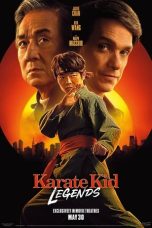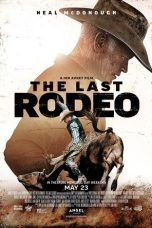Stomp the Yard (2007) Review: A Dance-Fueled Journey of Redemption and Rivalry
“Stomp the Yard,” released in 2007, is a dynamic and energetic dance drama that brought the underground world of stepping to the big screen. Directed by Sylvain White, the film combines electrifying dance sequences with a story of personal growth, brotherhood, and rivalry. With a cast that includes Columbus Short, Meagan Good, and Ne-Yo, “Stomp the Yard” explores themes of redemption and the power of community, all set against the backdrop of competitive stepping in a historically Black college. This review will examine the film’s plot, characters, dance choreography, and impact, as well as where to watch “Stomp the Yard” online.
Plot: From the Streets to the Yard
“Stomp the Yard” follows the story of DJ Williams (Columbus Short), a talented street dancer from Los Angeles who gets caught up in a tragic incident that leads to his brother’s death. Struggling with guilt and anger, DJ is sent to live with his aunt and uncle in Atlanta, where he enrolls at the historically Black Truth University. Seeking a fresh start, DJ quickly finds himself drawn into the university’s vibrant stepping scene, a form of dance deeply rooted in African-American fraternity culture.
At Truth University, DJ encounters two rival fraternities, Theta Nu Theta and Mu Gamma Xi, both vying for dominance in the upcoming national stepping competition. DJ’s natural talent and innovative style catch the eye of the Theta Nu Theta brothers, who recruit him to help lead them to victory against their longtime rivals, the Mu Gammas. As DJ becomes more involved with the fraternity, he begins to find a sense of belonging and purpose, while also facing challenges in love, loyalty, and leadership.
The plot weaves together DJ’s journey of self-discovery with the intense rivalry between the two fraternities, culminating in a high-stakes final dance battle that tests DJ’s skills, courage, and commitment to his new brotherhood.
Characters: A Cast of Talented Performers
The characters in “Stomp the Yard” bring a mix of intensity, charm, and charisma to the film, making it more than just a dance movie. Columbus Short delivers a compelling performance as DJ Williams, capturing the character’s internal struggle and gradual transformation from a troubled young man to a respected leader. Short’s background as a professional dancer adds authenticity to his performance, particularly in the film’s intricate dance sequences.
Meagan Good plays April, DJ’s love interest and the daughter of Truth University’s president. April is intelligent, independent, and compassionate, providing a stabilizing influence in DJ’s life. Their relationship adds a layer of emotional depth to the film, as DJ learns to open up and trust others again.
Ne-Yo, in his acting debut, portrays Rich Brown, a member of Theta Nu Theta who becomes one of DJ’s closest friends. Ne-Yo’s natural charisma shines through, making Rich a likable and relatable character. The camaraderie between DJ and Rich, as well as the other fraternity brothers, is a central element of the film, highlighting themes of brotherhood and solidarity.
The film’s antagonist, Grant (played by Darrin Henson), is the arrogant and skilled leader of Mu Gamma Xi. Grant’s rivalry with DJ fuels much of the tension in the film, culminating in their showdown during the final competition.
Dance Choreography: A Spectacle of Stepping
The real star of “Stomp the Yard” is the dance choreography, which showcases the power, precision, and creativity of stepping. Stepping is a percussive dance style where the body is used as an instrument to create complex rhythms and sounds through a combination of footsteps, claps, and spoken word. The film’s dance sequences are meticulously choreographed, blending traditional stepping with modern hip-hop influences.
Choreographers Dave Scott and Chuck Maldonado, both respected figures in the dance world, crafted routines that are not only visually stunning but also emotionally charged. The dance battles in “Stomp the Yard” are more than just physical displays; they are expressions of identity, pride, and community. The film’s final competition scene is particularly memorable, with Theta Nu Theta delivering a performance that combines innovation, unity, and raw energy, ultimately securing their victory.
Themes: Redemption, Brotherhood, and Cultural Pride
“Stomp the Yard” delves into themes that resonate beyond the dance floor. DJ’s journey is one of redemption, as he moves from a place of anger and isolation to one of acceptance and belonging. His involvement with Theta Nu Theta and the stepping community helps him to heal and find a new sense of purpose.
Brotherhood is another central theme, as the film explores the bonds formed within the fraternity. The sense of unity and mutual support among the Theta Nu Theta members contrasts with the individualism and competition seen in DJ’s past life. This theme is reinforced by the stepping itself, which requires precise coordination and teamwork, symbolizing the strength of the group over the individual.
“Stomp the Yard” also highlights cultural pride, particularly within the context of historically Black colleges and universities (HBCUs) and African-American fraternity traditions. The film showcases the importance of these institutions in preserving and celebrating Black culture, with stepping serving as both a cultural expression and a rite of passage.
Cultural Impact and Reception
“Stomp the Yard” was a commercial success, grossing over $75 million worldwide against a modest budget. The film resonated with audiences, particularly within the Black community, for its authentic portrayal of stepping and its celebration of African-American culture. While the film received mixed reviews from critics, with some praising the dance sequences but critiquing the storyline, it has since gained a dedicated fan base and is often cited as a defining film in the dance movie genre.
The film also contributed to the popularization of stepping outside of its traditional contexts, introducing the art form to a broader audience. “Stomp the Yard” remains a touchstone for films and shows that explore dance and fraternity life, continuing to influence the genre years after its release.
Where to Watch “Stomp the Yard” Online
For those looking to watch “Stomp the Yard,” the film is available on several streaming platforms and digital services in the United States:
- Amazon Prime Video: You can rent or purchase “Stomp the Yard” on Amazon Prime Video. Rentals typically start at $3.99, while purchasing the movie in HD costs around $12.99.
- Netflix: “Stomp the Yard” is occasionally available on Netflix, depending on regional availability. It’s worth checking if the film is currently in the platform’s catalog.
- Apple iTunes: Available for both rental and purchase, iTunes offers “Stomp the Yard” in HD. Renting the movie costs around $3.99, and purchasing it is usually $12.99.
- Google Play Movies & TV: Google Play offers “Stomp the Yard” for digital rental or purchase, with similar pricing to other platforms.
- Vudu: Vudu has “Stomp the Yard” available for rent or purchase, making it another option for digital viewing.
- YouTube Movies: The film is also available for rental or purchase through YouTube Movies, offering a convenient way to watch directly on YouTube.
Conclusion: A Dance Film with Heart and Soul
“Stomp the Yard” stands out in the dance film genre for its combination of high-energy choreography, compelling characters, and meaningful themes. While the film’s plot may follow familiar beats, its execution is elevated by the performances and the electrifying stepping sequences that bring the story to life. Whether you’re a fan of dance films, interested in African-American cultural traditions, or simply looking for an inspiring story of redemption and brotherhood, “Stomp the Yard” delivers an experience that is both entertaining and emotionally resonant.
With its availability on multiple streaming platforms, now is a great time to revisit this dance-fueled journey or discover it for the first time. “Stomp the Yard” remains a testament to the power of dance to tell stories, build communities, and inspire change.

















